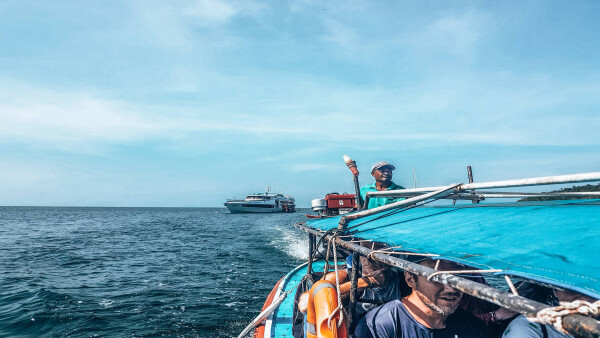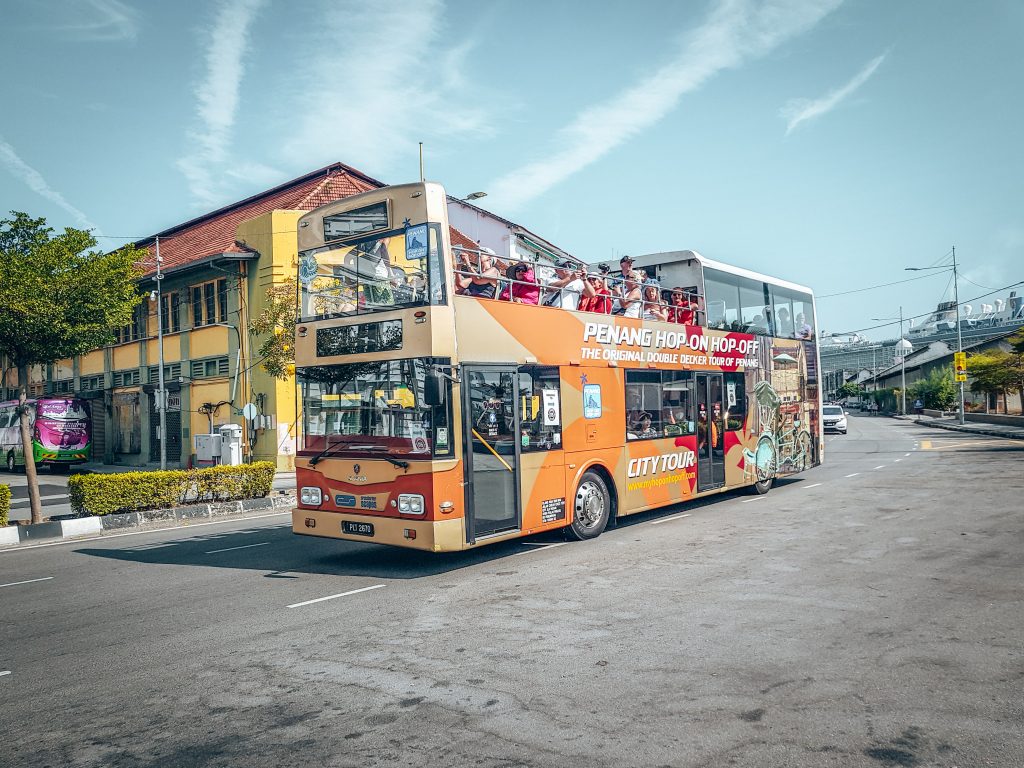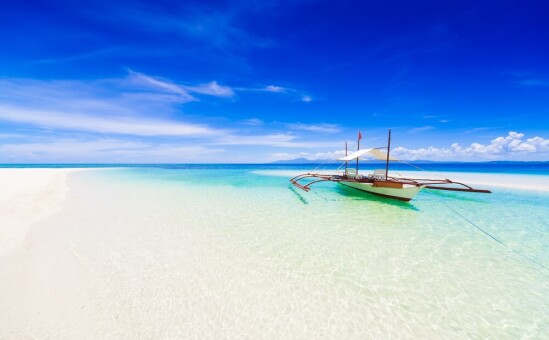Insider’s guide to transportation in Malaysia
Heading to Malaysia but don’t know how to get around? We break down all the options – from flights to ferries, motorbikes, buses & the metro.

There are a million reasons why you should visit Malaysia, from exploring the capital city Kuala Lumpur, understanding how heritage has shaped towns like Melaka, heading to the last remaining vestige of the ‘man of the forest’ – orangutans – in Borneo or looking for pure relaxation on idyllic islands like Tioman or the Perhentians.
So, with it now firmly on your bucket list, here is the lowdown on how to get around both mainland (or west) Malaysia and the more remote Borneo side of the country. And the good news? The infrastructure in the country is top-notch! From one of the world’s best low-cost flight carriers, to excellent ferries, we break down everything you need to know.
Cross-country transportation
Flights
In Europe there is easyJet, in the US it’s Southwest Airlines and in Asia, it’s Air Asia! You get the picture: The leading low-cost carriers really have changed the industry and made travel very cheap and accessible. With Air Asia, and its fleet of 100 planes, being headquartered out of Kuala Lumpur, flights across Malaysia (and further afield) are in ample supply.

Of course, there are a number of other competitor brands also keeping the costs down in the region, so book early to get those extra special flight deals – but don’t forget to check on those hidden costs!
Some of the most popular internal flight routes include:
| From | To | Airlines | Frequency |
|---|---|---|---|
| Kuala Lumpur | Penang | AirAsia, Firefly, Malaysia Airlines, Malindo and Thai Lion | Most offer at least one flight a day |
| Kuala Lumpur | Langkawi | AirAsia, Firefly, Malaysia Airlines, Malindo and Thai Lion | Most offer at least one flight a day, with AirAsia offering up to 5 per day |
| Kuala Lumpur | Kota Bharu | AirAsia, Firefly, Malaysia Airlines, Malindo and Thai Lion | All offering at least two flights per day |
| Kuala Lumpur | Kota Kinabalu | AirAsia, Firefly, Malaysia Airlines, Malindo and Thai Lion | All offering at least two flights per day |
| Kuala Lumpur | Kuching | Firefly, Malaysia Airlines | At least one flight a day |
Trains
Train travel in Malaysia harks back to a colonial era and the age of romantic train travel is still something that’s very accessible, reliable and one of the most cost-effective ways of getting around mainland Malaysia.
There are two routes on the mainland travelling from Singapore, into Johor Bahru towards Kuala Lumpur. The main line continues on to Kuala Lumpur, through to Ipoh, Penang (well, Butterworth) and on towards southern Thailand. And the jungle line separating before KL and making its way across the highlands to Kota Bahru.
Although the rail network on Borneo leaves a bit more to be desired.
Intercity buses
The road infrastructure in Malaysia, particularly on the peninsula is extremely good – actually one of the best in Southeast Asia, meaning that the local and tourist coaches and buses are an excellent way to travel around the country.

Whether you’re taking a bus from KL to nearby Melaka, or even traveling the length of the country from Kuala Lumpur to Penang it’s a very comfortable, reliable and cheap experience.
Whilst the roads in Borneo are not as well developed, coaches and buses are still the best way to get between the major cities.
You can of course decide to hop over to neighboring nation, Singapore, for a few days if you’re doing a joint Singapore and Malaysia itinerary.
Popular routes:
| From – To | Frequency | Cost |
|---|---|---|
| Kuala Lumpur – Penang | Up to 4/day | Starts at $11 |
| Ipoh – Cameron Highlands | Up to 10/day | Starts at $7 |
| Penang – Genting Highlands | 1/day | Starts at $12 |
| Penang – Melaka | Up to 4/day | Starts at $14 |
| Kuala Lumpur – Johor Bahru | Up to 30/day | Starts at $5 |
Getting to the islands
Ferry
And if it’s your dream to head out to some of the most exquisite islands in the world, then you’ll probably need to jump on one of the many ferry options (that is unless you fly directly to Langkawi).

The question is not whether you should visit the islands, but how to choose from the feast of options available! From mainland Malaysia should you head to Langkawi for the beaches and water sports, Redang and Lang Tengah for the incredible diving, the Perhentians for total relaxation or the unparalleled beauty of Tioman?
Don’t forget if you’re looking for an interesting way to get from Malaysia to Thailand then you should hop on the ferry from Langkawi to Koh Lipe – there’s even a review of what to expect.
Getting around in Malaysia’s cities
Taxis
The easiest way to get around the cities in Malaysia is to jump into one of the taxis. Whether that’s hailing one on the road, or even better, using Grab (Southeast Asia’s answer to Uber) to book your ride.
Although it is the easiest way to get around, it is unsurprisingly the most expensive, but – like everything in the region – prices are still not a patch on the costs you’d find in most cities in Europe or North America.
Pro tip: If you want a night in and are keen on a food delivery, have the Grab or Food Panda app downloaded, for your friendly driver to pick up your favorite local dish.
Motorbike taxi
Some of the cities, most notably KL, can suffer from pretty snarled-up traffic, so if you’re interested in the fastest way about town, you can hire motorbike taxis.
The largest company providing this service is Dego Ride, although in mid-2020 Grab and Indonesian outfit Gojek were trialling out their own version of the same in Kuala Lumpur with expected expansion across the country to follow.
Local buses
There is no better way to get to experience the local way of life in Malaysian cities than by jumping on the local buses to get around town.

You’re likely to hit up a conversation with some locals on the buses, which provides a unique and wonderful way to learn more about the city.
That said, the bus routes can be a little confusing, so it’s worth planning online before you go – most cities will provide comprehensive online route guides and tips – but if that fails, ask the locals, and they will be more than helpful in getting you where you want to go.
Most of the cities of course have the requisite tourist hop-on, hop-off bus tours too which, although a bit commercialized, are a wonderful way to wind your way around the key sights.
Pro tip: If you’re in Kuala Lumpur, check out the MyRapid KL Travel Pass which gives you access to all the buses, rail/metro and even airport transfers for 2 days!
Rail and Metro
The train network varies quite significantly from city to city, and even from mainland to Borneo. Some of the networks are super modern and efficient, just like you’d expect in Europe or the US, while others are a more atmospheric trip with more vintage style trains.

A little like the bus networks, the Metro (which is only in Kuala Lumpur) is a little confusing and disjointed if it’s your first time in the city. They have around 5 different operators, which often don’t integrate or connect so best to try and plan your journey ahead, by checking out the MyRapid website.
Pro tip: Many of the railway stations in Malaysia are colonial masterpieces, with beautiful architecture to behold. Even if you aren’t transiting through them, they might be worth a visit.






